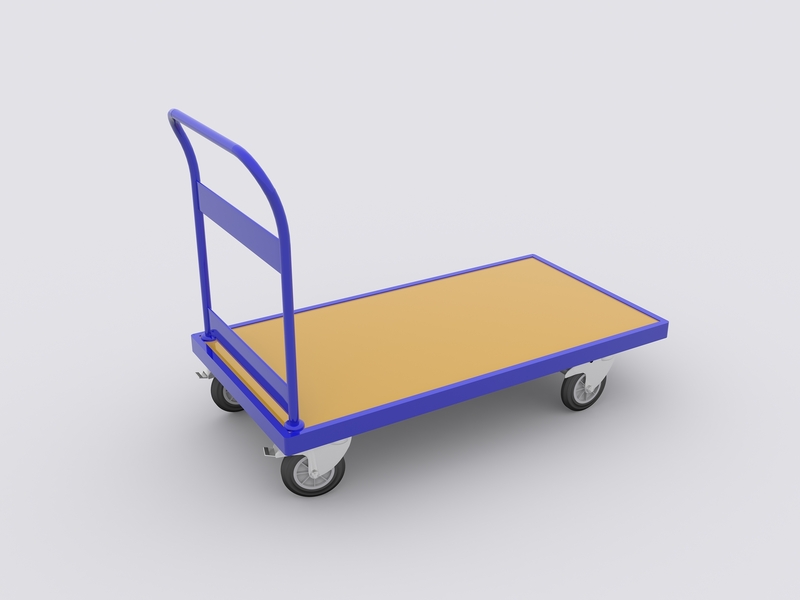Couch Safekeeping: Essential Tips for Prolonged Storage
Posted on 18/05/2025
Couch Safekeeping: Essential Tips for Prolonged Storage
When life calls for a change in living arrangements, a major renovation, or a move to a new city, storing your couch becomes a necessity. Couch safekeeping is not as simple as sliding a sofa into a storage unit and locking the door. Protecting your cherished piece of furniture from time, dust, moisture, and pests requires a thoughtful, strategic approach. This comprehensive guide covers vital tips and expert insights on prolonged couch storage, so your sofa emerges as comfortable and attractive as the day you stored it.
Why Proper Couch Storage Matters
Some view a couch as just another piece of furniture, but for many, it becomes the centerpiece of family gatherings, movie nights, or a cozy Sunday morning. Investing time in proper couch preservation is about more than protecting material value -- it's about safeguarding comfort, aesthetics, and personal memories attached to your couch. Improper storage can lead to:
- Mold and mildew growth from trapped moisture
- Staining and fabric discoloration due to prolonged exposure to dust or sunlight
- Infestation by rodents or insects
- Persistent odors that are difficult to remove
- Structural damage, including warping or weakened frames
Taking preventive measures for couch storage helps you avoid costly repairs and disappointment down the road.

Preparing Your Couch for Long-Term Storage
1. Thoroughly Clean the Couch
Before you think about wrapping or moving your sofa, the first step is a project you cannot afford to skip: deep cleaning your couch. Dirt, crumbs, and oils can attract pests and may even cause staining over time.
- Remove all cushions and vacuum the entire surface, including cracks and seams
- Spot-clean stains with soap and water or an upholstery cleaner suitable for your couch's material
- Allow the couch to dry completely before proceeding
- Launder removable covers as per manufacturer recommendations
- Condition leather surfaces using a leather-safe product to prevent drying and cracking
Tip: Cleaned, dry upholstered furniture is far less likely to develop odors or mildew during storage.
2. Disassemble When Possible
The less surface area exposed and the fewer pressure points during transport, the better for your couch. Take these steps:
- Remove legs and detachable arms or cushions to simplify moving and reduce the risk of breaking or bending
- Wrap small parts in bubble wrap, label, and store together in a sealed bag or box
- Keep screws, bolts, and fasteners in a labeled envelope attached securely to the sofa frame
This not only makes the process of couch safekeeping easier but also safer for both your furniture and the individuals moving it.
How to Protect Your Couch During Storage
1. Use the Right Packing Materials
Wrapping your sofa correctly is one of the most important aspects of couch protection for storage. You'll need:
- Furniture blankets to prevent scratches and nicks
- Plastic wrap (not directly on leather or fabric as it can trap moisture, but over blankets or protective covers)
- Stretch wrap to secure padding and covers
- Sealable plastic bags for smaller components
Always avoid using cling film or heavy plastic directly against upholstery or leather, as it can lock in moisture and promote mold. Instead, opt for a layer of breathable fabric (like an old sheet or cotton furniture cover) before sealing with outer protection.
2. Choose the Best Storage Environment
- Select climate-controlled storage when possible, especially for long-term couch safekeeping
- Store off the floor: Place your couch on pallets or wooden boards to safeguard against dampness or unexpected flooding
- Avoid bright sunlight, which can fade and weaken fabrics over time
- Ensure good ventilation in the chosen space to prevent condensation and moisture buildup
Climate-controlled storage units are more expensive, but they greatly reduce risks related to temperature swings and humidity -- a worthwhile investment for valuable or sentimental couches.
Safe Handling Tips: Moving and Storing Your Couch
1. Transport Carefully
- Lift from the base, not by the arms or back, to avoid undue stress on joints
- Use moving straps or dollies to distribute weight evenly
- Avoid dragging the couch, which can rip fabric and scratch finishes
Moving is the time when most accidental damage occurs, so take it slow and never hesitate to recruit professional help for heavy or awkwardly shaped sofas.
2. Store Upright if Space-Saving Matters
- For prolonged storage, keeping your couch upright reduces the floor space required
- Ensure stability by bracing with other soft furniture or padded supports
- Never stack heavy objects on top of the couch to avoid sagging or frame warping
3. Allow for Air Circulation
Don't wedge your couch directly against a wall or stack items tightly around it. Allowing air to circulate minimizes the risk of mold, especially in non-climate-controlled environments.
Extra Precautions: Long-Term Couch Storage Best Practices
1. Moisture and Pest Protection
- Place moisture-absorbing products (like silica gel packets or charcoal bags) around -- not directly on -- your couch
- Regularly inspect storage units to ensure no leaks or signs of pest activity
- Use natural pest deterrents such as cedar blocks or lavender sachets inside covered sofas and cushions
Never use strong chemical pest repellents inside a couch, as they may damage the upholstery or create unpleasant odors.
2. Schedule Periodic Checks
If possible, visit your storage unit or wherever your couch is stashed every 4-6 weeks. During your check:
- Lift covers, inspect for signs of moisture, mold, or infestation
- Check for odors: A musty smell may signal trapped moisture
- Rotate cushions and adjust placements to prevent uneven wear
Early detection makes it easier to solve minor issues before they become serious problems.
3. Insurance and Inventory
- Photograph your couch before and after packing as documentation
- List your stored items and include details in your home or renter's insurance
- Verify your storage unit's insurance policy to see what is covered in the event of damage
Common Mistakes to Avoid in Couch Storage
Successful prolonged couch storage means steering clear of these classic errors:
- Storing while damp: Even slightly damp upholstery can breed mildew quickly
- Direct use of plastic wrap: Without a breathable layer, plastic locks in moisture against fabric or leather
- Neglecting periodic checks: Out of sight should not mean out of mind
- Improper stacking: Heavy boxes or items left on the sofa create indentations and can damage frames
- Ignoring the climate: Humidity, heat, and sunlight are enemies of couch longevity
Couch Material Matters: Specific Tips for Various Sofa Types
Fabric Couches
- Vacuum carefully to remove all debris
- Use fabric-friendly, breathable covers rather than plastic for long periods
- Keep away from direct light and sources of humidity
Leather Sofas
- Condition the leather with a high-quality conditioner before packing
- Cover with soft, dry cloth or leather-specific cover
- Keep off plastic directly on the leather
- Store in stable temperatures away from sources of heat or extreme cold
Sectionals or Modular Couches
- Disassemble into manageable sections
- Keep all connectors and legs in labeled bags
- Wrap each section individually to avoid scratches or frame damage
Antique or Delicate Sofas
- Consult a furniture conservator, if possible, for best preservation methods
- Use acid-free, archival quality covers and supports
- Never place weight on delicate wood or carved elements
Removing Your Couch From Storage: Inspection and Reassembly
- Unwrap in a clean, dry space
- Inspect for damage or odors as soon as possible
- Allow fabric and cushions to air out
- Reassemble carefully, using labeled screws or fasteners
- Spot clean again if needed
Most importantly, spend some time enjoying your freshly revived couch! After a period of long-term storage, a little patience and care will restore it to its prime condition.

Frequently Asked Questions About Couch Safekeeping
Is a climate-controlled storage unit necessary for my couch?
While not mandatory, climate control significantly increases the odds of keeping your sofa in like-new condition. For precious, fabric, or leather sofas, it's highly recommended.
Can I use a regular plastic sheet to cover my couch?
Plastic sheets can be used, but they must always go over a breathable fabric layer and not directly on upholstery or leather. This strategy prevents moisture entrapment, which leads to mold.
How can I keep pests away from my couch in storage?
Use natural repellents, inspect the storage area for gaps, and keep all eatables and crumbs off the couch. Silica gel and cedar blocks help repel pests without corrosive chemicals.
How long can a couch be stored safely?
With the tips above, many couches remain in excellent condition for months or even years. Extended durations require periodic checks to ensure conditions haven't changed.
What should I do if my stored couch smells musty?
Remove all covers, air out the couch in a well-ventilated area, and neutralize odors with baking soda or specialized fabric refreshers. For persistent problems, professional cleaning may be required.
Conclusion: Invest in Thoughtful Couch Storage
Couches are more than furniture--they're a comfortable companion in your most lived-in spaces. When storing your couch for the long haul, follow these proven safeguards for cleanliness, stability, moisture protection, and pest deterrence. Whether you're between homes, upgrading your space, or just making room for change, these couch safekeeping tips for prolonged storage ensure that when the time comes to relax again, your sofa is as inviting as ever.
Protect your investment, your comfort, and your memories: keep your couch safe with these expert storage strategies!







